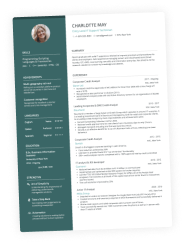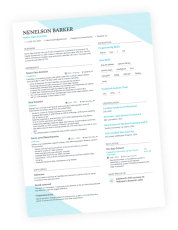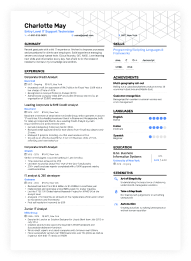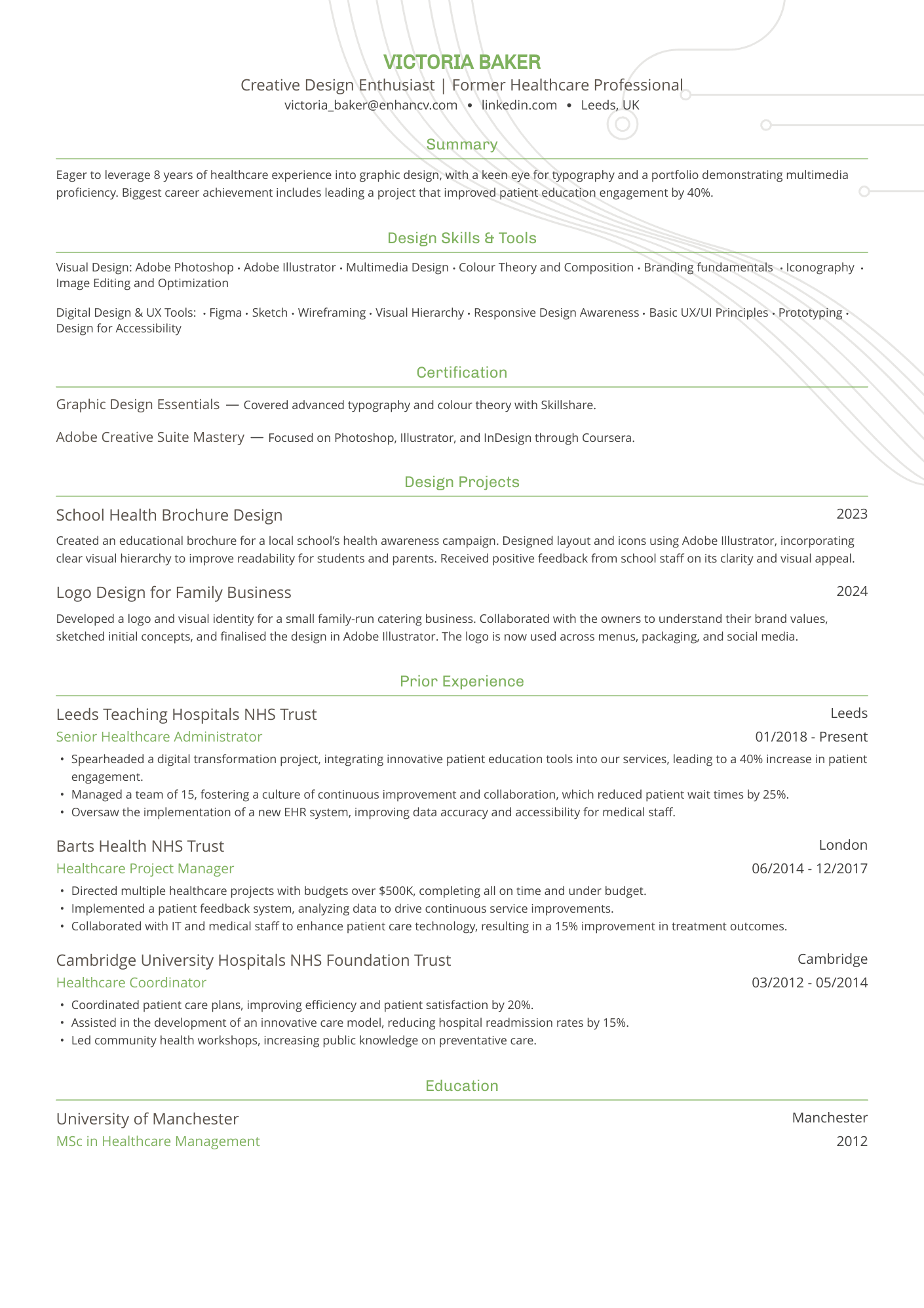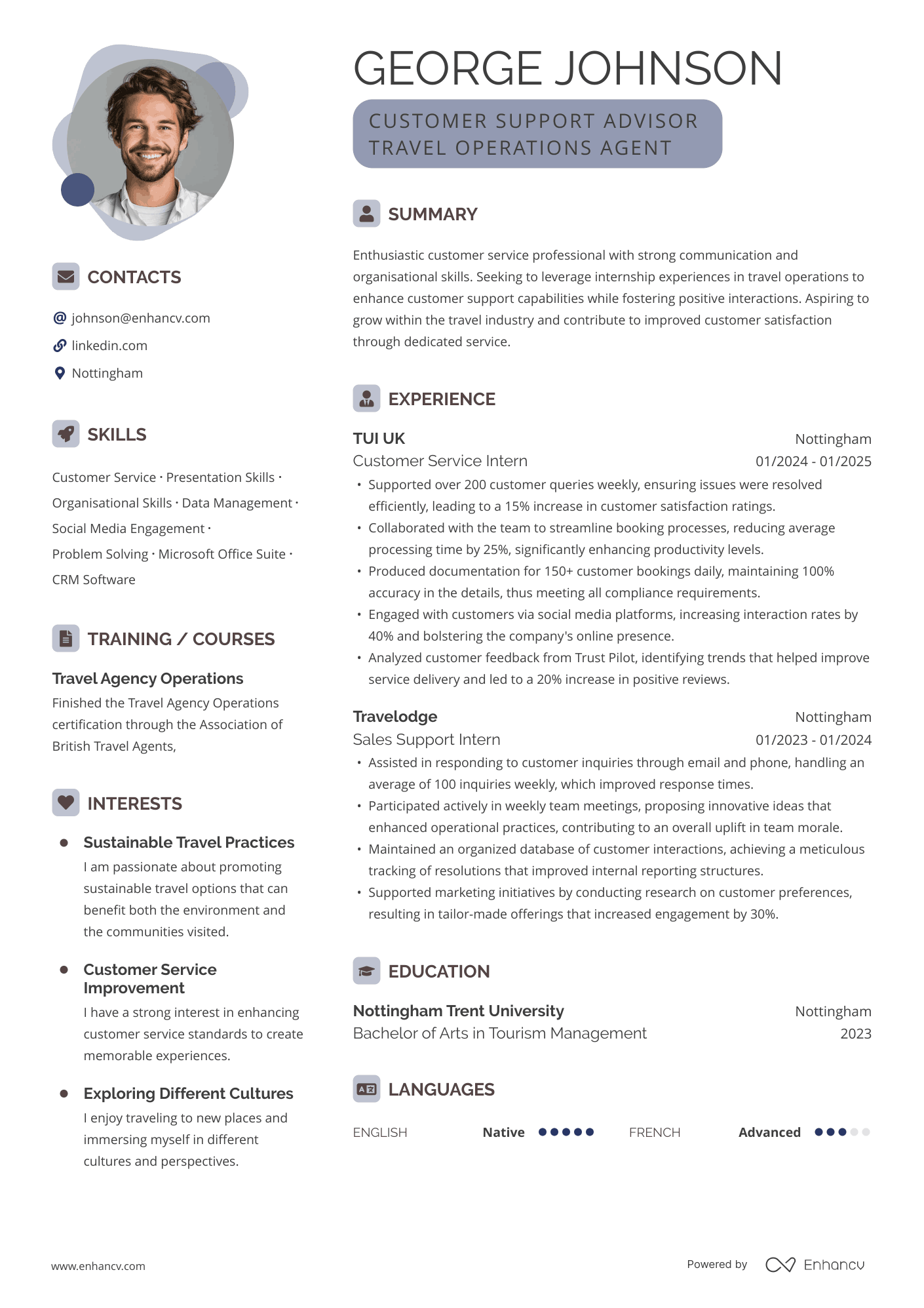When writing a CV, your education, skills, and work experience are the stars of the show. These are the things that catch the hiring manager’s attention and make them want to know more. However, when you’re up against tons of similar candidates, you might want to give them something extra.
Sharing your hobbies and interests on your CV might feel like a controversial move, but it could set you apart from the crowd. Choosing things that show how you’re a prime cultural fit or that you have the skill set to succeed is a smart strategy. It gives you the chance to bolster your CV while adding a dash of personality into the mix. But how can you get the balance right?
In this guide, we will look at the times when you should add hobbies and interests to your CV, where to include them, and how they can strengthen your application. We’ve also got a range of examples, listed by industry, to give you the inspiration that you need.

Key takeaways
- Hobbies and interests can set you apart from similar candidates, but you should only include them if they demonstrate relevant skills or cultural fit.
- Be specific rather than generic. Swap "reading" for "reviewing 19th-century literature (book club host)” to show off communication and initiative.
- Tailor your hobbies to the role by researching the company culture and matching the language in the job advert.
- Add one line of context to each hobby explaining its relevance, such as "marathon running: demonstrating discipline and goal-setting."
- Avoid controversial topics—like politics and religion—and overly personal interests that don't strengthen your application.
Ready to see whether your CV hits the mark? Drop it into Enhancv’s free CV Checker to spot potential gaps and improve your chances.
Is your CV good enough?
Drop your CV here or choose a file. PDF & DOCX only. Max 2MB file size.
Before we go any further, let’s break down what we mean by hobbies and interests.
What are hobbies and interests on a CV?
Hobbies and interests are any extracurricular activities you engage in outside of work. Including these on your CV can help showcase why you’re the right cultural fit for the position. This is especially important for early-career professionals, who may lack other experience.
Selecting the right hobbies and interests gives the hiring manager a broader picture of who you are and why you will thrive in this role. However, you should make sure that the ones you choose align with the sector and highlight skills you will use in the job. That means avoiding generic activities that do nothing to strengthen your application.
While there’s plenty of overlap between hobbies and interests, they aren’t the exact same thing.
Here are some quick examples to help you understand what we mean:
Hobbies vs. Interests
| Examples of hobbies | Examples of interests |
|---|---|
|
|
The above is by no means exhaustive. However, it gives you a clear idea of what a hobby is and what an interest is. But why are so many people dubious about including them?
Why most hobby sections miss the mark
Back when you were at school, your teachers may have told you that hobbies and interests have no place on your CV. But things are rarely black and white. Let’s kick things off by looking at why most hobby sections miss the mark.
They’re too generic and obvious
Saying you love reading, watching Netflix, and going for walks is unlikely to impress a hiring manager. These hobbies tell the reader very little about you, and could be on pretty much anybody’s CV. Selecting generic hobbies or interests for your CV is a literal waste of space.
They’re irrelevant to the sector
You might think your Stardew Valley experience is frightfully interesting to hiring managers. However, if it fails to say anything about your real-world skills or personality, it may not put you in the best light. Consider whether your hobby has any relevance to the role or field.
They’re culturally risky
When political tensions are high, including your party on your CV may be a risky move. Of course, there are some circumstances when adding this to an application makes sense—if, for example, you’re applying to work at a nonprofit organisation. However, if there’s a chance your political views could work against you, it’s worth leaving them off your CV completely.
Okay, so that’s how things can go wrong. But what if they go right?
Let’s talk about how you decide whether you should put hobbies and interests on your CV.
Should you put hobbies and interests on your CV?
If you’ve ever asked yourself, “Should I put hobbies on my CV?” this one’s for you. The short answer is yes, but only when they add some job-relevant context or show why you’re the best cultural fit. On the off-chance you’re simply including them to take up space, skip them completely.
Here are four scenarios when sharing your hobbies may boost your chances of job success:
You have little or no work experience
Whether you’re a student, recent graduate, or career changer, you may have no direct work experience in your field. That’s going to leave a pretty big hole in your application. One way to fill it is by showcasing relevant hobbies and interests that make you the right fit.
For example, if you’re applying for a trader position, sharing that you are captain of a chess team could be the way to go. This hobby highlights your intelligence, strategic mind, and leadership skills all in one. Always consider what your hobby or interest says about your strengths and character.
The sector is hot on creativity and culture
Being a “culture hire” isn’t necessarily a bad thing—if it gets your foot in the door. Some sectors are keen on selecting candidates based on their innovation and cultural fit for the role. Fields such as tech, marketing, and brand management often value more than mere CV experience.
Demonstrating that you’ll gel with the company is half the battle. For instance, if you know that the business holds team-building roleplay retreats, you could mention that you are part of a Werewolves team. This small anecdote shows the hiring manager that you suit the vibe of the workplace.
You need to fill unavoidable white space on your CV
Is your CV looking a little sparse? While you may have some relevant work experience, if there’s too much space on the page, you’ll need to think outside the box. White space is a good thing when it makes your CV easier to read. However, if it looks like it’s lacking, you need to add something extra.
That’s where hobbies and interests come into play. While this is one of the less popular CV sections in the UK, it can help to make your application more well-rounded. If you desperately need to fill some space, you can slide this section onto your CV. When choosing which hobbies and interests to list, make sure each one is relevant to the field or says something positive about your skills or personality.
Look at an example CV made with Enhancv’s AI CV Builder:
The advert specifically requests hobbies and interests
You already know the power of closely reading the job advert, the description, and the criteria. Far too many candidates skim-read these posts, which means they miss out on crucial details. At times, hiring managers will leave candidates small Easter eggs in the text. Notice them, and you already have an in that could give you an edge over the competition.
For instance, if the job advert says “Having an interest in the latest technology is a bonus,” take that and run with it. You can include “technology trends” as one of your main interests, and even elaborate on the magazines you subscribe to in this niche. It’s this level of attention to detail that takes you from being a potentially good candidate to an excellent one.
If you’ve decided to include a hobbies and interests section, let’s get down to it.
What makes a good Hobbies & Interests section?
You might be pondering which hobbies and interests to highlight on your CV. Chances are, you have a few in mind already. However, not every way you spend your spare time deserves a spot on your application.
Here are the traits that a good hobby or interest section should have:
- Specific: Avoid those generic interests such as travel, reading, and music. Instead, be specific about your hobbies and interests, and how you engage with them.
- Role-relevant: Now, the hobby or interest doesn’t need to align with the role exactly, but it should have relevance. For example, playing a team sport shows you’re a good collaborator. If that’s essential to the role at hand, it may be worth including on your CV.
- Brief: CV real estate is expensive. You don’t want to waste it on things that don’t matter. Keep your hobbies and interests brief—including three to five at most—in plain, British English.
- Low down: Whilst your hobbies and interests may deserve a place on your CV, they don’t warrant the top spot. Position this section low, below the rest of your primary CV sections.
- Not controversial or personal: Think of your CV like a dinner party, and avoid talking about religion or politics. You should also steer clear of any overly personal or NSFW hobbies.

Ask yourself…
- Do your hobbies and interests add something of value?
- Does each hobby show a skill or trait that’s relevant to the job?
- Have you kept the section short and snappy?
- Are any hobbies too personal or potentially controversial?
Now that you know what makes a good hobbies section, it’s time to learn how to create one.
How to list hobbies and interests on a CV: 4 simple steps
If you’ve decided to include hobbies and interests on your CV, here’s a rundown of how you can get it right.
Step 1: Research the role and the company
First things first, you should go back to the job advert and do some investigating. Look for any hints at the type of candidate the hiring manager is looking for. For example, if the description talks about having good “presenting skills,” you might want to mention your interest in podcasts.
You should always tailor your CV to the job. You can do this by mirroring the language from the advert, ensuring you have covered the core criteria, and cherry-picking interests and hobbies.

Go beyond the advert
Reading the advert should be your first port of call. Most candidates start and finish their research there. But why not take the time to go a little deeper?
Check the company’s website, LinkedIn, and any other social media accounts. You can also run a quick Google search to see whether the business has made the headlines.
The research pays off in two vital ways—you'll know which interests to include, and you'll have talking points ready for your interview.
Step 2: Add some micro-context
We’ve talked about how you should keep this section brief. However, a little context can go a long way when sharing hobbies and interests on your CV. Explain why the point is relevant to your application.
There’s a simple formula for this. Start with the name of the hobby and then add one line of context. For instance, the name may be “volleyball coaching” and the context may be “supervising six players at a youth club”. If you’re applying for a leadership position, this shows you’ve got skills in the bag.
Step 3: Use keywords and the employer’s language
Sometimes, it’s not what you say, it’s the way that you say it. When you’re writing about your hobbies and interests, make sure you use specific keywords from the job description. The closer you can match your language to that of the hiring manager, the better your chances of success.
There are two reasons for this. Firstly, using the same language as the hiring manager means you’re likely to pique their interest. They will be skimming CVs and looking for certain stand-out words and phrases. Use them, and you’re off to a winning start.
Secondly, if they are using an applicant tracking system (ATS) and have it set up for keywords, the software will be looking for specific terms. Using the same words you find in the advert isn’t a guarantee that you’ll score well on the ATS, but it certainly increases your chances.

Sneak keywords into this section
Your hobbies and interests section is a great little place to sneak in some soft-skill keywords. For example, if the job advert says you need to have “strategic thinking,” you could include a hobby like “collaborative board games: demonstrating strategic thinking.”
Make sure the connection you make between your interest and a keyword is genuine. Trying to shoehorn words onto your CV looks obvious and won’t win the hiring manager over.
Step 4: Ensure consistent formatting
The last thing you want is your hobby section taking over your CV and looking messy. For that reason, you’re going to need to keep things neat and tidy.
Let’s take a look at two options you can consider:
Option 1: Use commas to separate points
If you’re short on space, using commas to separate your various hobbies and interests keeps things brief. You can sum up each of your points in three to five words.
Hobbies & Interests
Marathon running, vintage film photography, volunteering at a local food bank, playing in a jazz quartet, Spanish language learning
Option 2: Create bulleted micro-lines
If you have the space, add some brief context. Bullet-point each hobby or interest, then use a colon to explain its relevance in a few words.
This format works well when you want to draw clear connections between your interests and the role's requirements without taking up too much CV space.
Hobbies & Interests
- Rock climbing: risk assessment and problem-solving under pressure
- Community theatre: public speaking and collaboration with diverse teams
- Restoring classic motorcycles: mechanical aptitude and attention to detail
Choose whichever option suits your application. Remember, there’s no need to overdo it and dedicate too much space to this section. It should support your CV, not dominate it.

PRO TIP
If you’re using icons or pie charts, keep them modest.
Enhancv’s CV templates are ATS-tested, but over-design can distract hiring managers.
Next up, it’s time to pick the perfect location for this CV section.
Where to put hobbies on a UK CV (plus formatting tips)
Most of the time, your hobbies and interests section should be the final part of your CV. Position it at the bottom of the page, below all of your other CV sections.
Of course, there are a few notable exceptions. If you’re a graduate or you’re going for a creative role, you can pop your hobbies section above your education section or near the skills section.
Here’s how that looks:
You can also use these quick formatting tips to get started when crafting a hobbies section.

Quick formatting tips
- Pick a style and stick to it: Choose a style and format that works for you (e.g. bullets with micro-context) and use it throughout the section.
- Skip tables and text boxes: These could trip up the ATS, meaning the software might not scan the sections properly.
- Avoid imagery: While light emojis and charts can be included, you don’t need to add extra imagery to this section.
- Keep it consistent: For example, if you use a full stop on one line, make sure that you use it on all of them.
Ready to get things moving? Next up, we’ll be taking a look at some right and wrong examples.
Hobbies and interests examples: right vs. wrong
By this point, you should have a good idea of what hobbies and interests to include. However, it’s far too easy to make simple mistakes. To demonstrate how, take a look at our good and bad examples.
Generic vs. specific
Here’s how a generic hobbies section would look:
And, here’s how you can make it more specific for a hiring manager:
Irrelevant vs. role-aligned
Your hobbies and interests should be aligned with the role.
Let’s take a look at an example of an irrelevant section:
Compare that to this example tailored to a teaching role:
Too long vs. concise
Of course, you don’t want the section to take up too much space.
Here’s how a long example might look:
And here’s how you can make it much more concise:
Getting this section right doesn’t have to be hard. With Enhancv’s builder tool, you can effortlessly create an application that turns hiring managers’ heads.
Best hobbies and interests to put on a CV (listed by goal)
Not sure which hobbies to include? It’s time for some inspiration. Every hobby or interest tells the hiring manager something about you. With that in mind, let’s break them down into your goals.
Highlighting your teamwork skills
If a job description asks for a team player, show you have what it takes in your hobbies section. Include pastimes in which you work as part of a wider team, like:
- Playing 5-a-side football
- Volunteering at a charity shop
- Taking part in community theatre
Showing your discipline and focus
Going for a role that requires a high level of focus and discipline? Reflect on your spare time and how you hone these skills. You may include interests like the following:
- Running half marathons
- Playing classic piano
- Engaging in martial arts
- Parkrun volunteer race-timer
Positioning you as a creative
Creative people often have multiple projects going on at once. If that describes you, don’t be afraid to shout about it on your CV. Here are some hobby examples:
- Hosting your own podcast
- Creative writing
- Amateur photography
Demonstrating your problem-solving skills
Solving problems in the workplace can often be achieved through play. What do you do in your free time that strengthens this skill? Here are some ideas:
- Chess or strategy games
- Playing escape rooms
- Coding side projects
Proving that you’re a people person
Interpersonal skills are always in demand, no matter what industry you work in. Think of times when you’ve collaborated with others and shown off your people skills. Here are some examples:
- Hosting a local book club
- Organising events via Nextdoor app
- Teaching English as a second language
Of course, it may be that there are certain things that align with your industry. When it comes to the best hobbies for your CV, think about which suits your field.
Industry-specific CV interests examples
Each field has its own rules, and you likely already know how to play by them. Next, we take a look at some common sectors and what hobbies or interests work for them.
Creative and media
Writing a creative CV? Include any hobbies that detail your innovative side. These may include side hustles, passion projects, and anything creative. Here are some examples:
- Film criticism blog: weekly reviews and building an audience
- Amateur documentary filmmaking: producing short films about local communities
- Podcasting: hosting, editing, and publishing bi-weekly episodes
Tech and data
The tech and data sectormoves faster than many can keep up with. Let the hiring manager know you’ve got your finger to the pulse by including key hobbies, like:
- Building personal coding projects: developing mobile apps and web tools
- Data science competitions: participating in Kaggle challenges
- Open-source software contributions: collaborating on GitHub projects
NHS and healthcare
The healthcare field is multifaceted, and your interests are likely to be the same. If you advocate for the public’s wellness outside of work, be sure to let the hiring manager know:
- First aid volunteer: providing cover at community events and sports matches
- Mental health awareness campaigning: organising talks and support groups
- Parkrun volunteer: coordinating weekly events and supporting runners
Charity and nonprofit
Charities and nonprofits seek candidates who genuinely care about social issues. Your hobbies and interests section should clearly demonstrate this. Here are some examples:
- Fundraising event coordinator: organising sponsored walks and auctions
- Homeless shelter volunteer: preparing meals and offering support and advice
- Wildlife conservation volunteer: participating in habitat restoration projects
CV interests examples you can copy
You might be itching to get started on your hobbies and interests section. Before you go away and do it, take a look at some good CV interests examples that will inspire you.
Professional CV example
First up, if you’re a professional going for a corporate role, you need to keep things simple. List hobbies that hint at your main skill-set, while painting you as a stable professional.
Here’s an example tailored to a salesperson's CV:
Put this section at the bottom of your CV. It’s less important than your education or work experience, but may help to give your application a splash of colour.
Entry-level CV example
New to the working world? If you’re looking to land your first job, you can use this section to share any prime skills you already have. Be clear on how each interest aligns with a skill.
Let’s take a look at an example for an entry-level accountant CV:
If you don’t have much work experience, you can move this section up in your CV. Consider positioning it next to your skills section on an entry-level CV.
Career change CV example
Switching lanes professionally can be tough. You need to prove to the hiring manager that you have the skills and experience to thrive in a new field. That’s where your pastimes can help your chances.
Here’s an example for a candidate moving into the marketing field:
The work experience you have likely doesn’t align with your new field. For that reason, you can place your hobbies and interests section above your career history section.
Creative portfolio-led CV example
Does creativity run through your veins? If the answer is yes, creating a hobbies section may be a smart strategy. Make sure that every interest you list is relevant to the role you’re applying for.
Let’s take a look at a copyable example for a copywriter CV:
You can place this section either at the bottom of your CV (as is standard!), or a little higher. The beauty of creative sector CVs is that there’s more scope to be creative with them.
5 common mistakes (and quick fixes)
| Common mistake | Quick fix |
|---|---|
|
|
Make it shine with Enhancv’s custom sections
Thinking of sliding some choice hobbies and interests onto your CV? With Enahncv’s custom sections, spotlighting them is easier than ever. We’ve designed customisable sections that include light and tasteful visuals, which are still ATS-friendly.
Here are three options you can use:
Passions section
For the classic hobbies and interests section, go for the passions option. You can pick three to five high-value hobbies to feature in this component. In each case, write a short line of micro-context. You can also use our custom icons to jazz up this section and draw the reader’s eye.
My time section
Want to give the hiring manager a visual breakdown of how you spend your time? This can be handy if you dedicate a wealth of time to supporting nonprofits or working in a charity organisation. The My Time section helps you create a simple pie chart.
Strengths section
If your hobbies are vital to the role you’re applying for, you might want to reframe them as strengths. Use this section to detail any extracurricular activities and interests that align with the job. You should add some brief proof of each talent in the form of a metric or evidence.

Use visuals strategically
Featuring too many visuals in this section is a mistake, and could mess with the ATS system if an employer is using one. Enhancv’s templates are tested to make sure they’re ATS-ready.
Takeaway
Hobbies and interests are rarely essential to a CV, but they do serve a purpose. If you lack work experience, you’re switching careers, or you just want to show you’re a good cultural fit, this section may work for you. In this guide, we’ve shared how to list hobbies on a CV professionally. Use the examples we’ve included as inspiration, but be certain to tailor your application to the job at hand.

